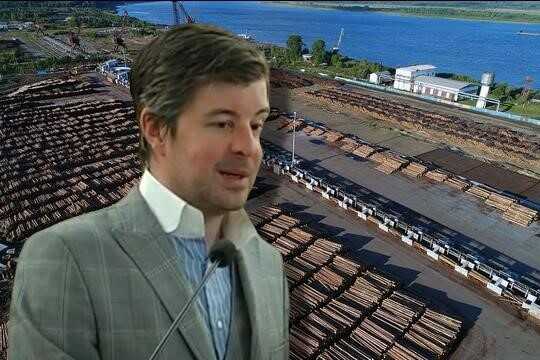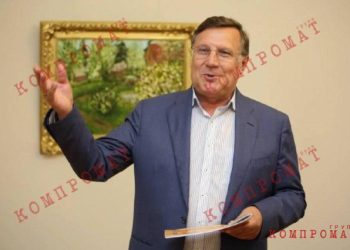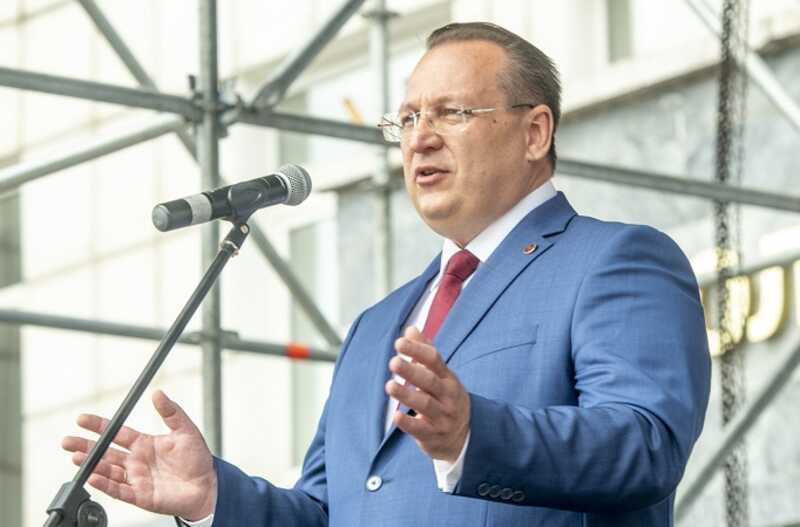How Segezha Group bought JSC NLHK and got Martin Hermansson in charge
Last year, Segezha Group, overtaking the Ilim group in terms of logging, became the sole leader in the industry. A significant contribution to this success was made by Swedish citizen Martin Hermansson. True, the methods by which he acted were very specific, and hardly benefited the Russian forest. Today, in the midst of the economic war unleashed by the EU countries, this gentleman continues to play an important role in the development of the strategic plans of the timber industry giant.
In 2021, the “crown” of the Segezha group of companies sparkled, perhaps, its most significant diamond – the New Yenisei Wood Chemical Complex (NLHK). A huge enterprise with a 60-year history, an annual allowable cut of 2.2 million cubic meters of wood, its own railway sidings and river fleet. And all this for quite “ridiculous” money: Segezha Group paid 2.3 billion rubles to Trust Bank, the majority shareholder, for a controlling stake. The remaining 29% of the Segezha group was bought from Swedish citizen Martin Hermansson for $17 million. At the same time, the minority shareholder himself joined the board of directors of the company, the composition of which was specially expanded for him.
It is curious that at the time of the transaction in relation to the Novoeniseysk timber and chemical complex, the Trust bank initiated a monitoring procedure. The bank demanded that the enterprise itself be declared bankrupt, having filed a corresponding application with the Arbitration Court of the Krasnoyarsk Territory: with its own funds at 1.5 billion rubles, NLHK’s debts approached 11 billion. At the same time, there was a conflict of owners: Trust Bank stated that due to disagreements with the owner of the RFI Consortium, Martin Hermansson, it was deprived of the opportunity to control the activities of the enterprise.
This whole story suggests that AFK Sistema, as the majority shareholder of Segezha Group, began “business cooperation” with a Swedish citizen long before the purchase of Novoeniseisky LHK. Most likely, Herr Hermansson, as part of this for the time being, tacit “cooperation”, and conducted a “pre-sale preparation” of an attractive asset. Moreover, the facts indicate that this business did not burn out without the participation of a number of Russian bankers and representatives of the Krasnoyarsk authorities …
Information about how the future member of the board of directors of the largest timber industry company in Russia, a Swedish citizen Martin Hermansson ended up in the places where the beautiful Angara flows into the mighty Yenisei, is vague and contradictory. His official biography says that he is “from a family of wealthy hereditary timber merchants.”
True, a number of Russian sources claim that the future “Siberian” began his path to big business with the development of private Swedish pension funds. Allegedly, a young graduate of the prestigious London School of Economics, using the acquired knowledge, managed to warm his hands on them pretty well.
According to media reports, the finances set aside by the Swedes for a comfortable old age ended up in Cypriot offshores, and Hermansson himself suddenly inflamed with love for the boundless expanses of the taiga of Russia.
Since 2005, he began to invest in the Russian timber industry. First – in the Arkhangelsk and Irkutsk regions. And in 2013, a Swedish citizen showed up in the Krasnoyarsk Territory. It is worth noting that in the richest region of the country with forest reserves, where the interests of various groups engaged in the development of taiga wealth are intertwined – from those protected by thieves in law to controlled by local and regional authorities – it is not at all possible for the Varangian to take his place in the “food chain” Just. But Hermansson succeeded: he “came” to the region through Viktor Shelepkov, the general director of the country’s largest timber chemical plant, whom he most likely met at the St. Petersburg International Timber Industry Forum, where both of them were regulars.
True, the then governor of the Krasnoyarsk Territory, Lev Kuznetsov, at first was distrustful of the “Varangian guest”, and, they say, for a long time refused to meet with him.
In December 2013, the head of the region went with his wife to his own villa, located on the French Riviera. But instead of a well-deserved rest “from the labors of the righteous,” Lev Vladimirovich and his wife got into trouble. Armed robbers broke into the house, beat them with batons, and Kuznetsov himself was even shot from the “injury” in the side. The trouble that happened to the governor did not cause much sympathy among the inhabitants of the Krasnoyarsk Territory – they were much more interested in the question of how the head of the region got real estate in a paradise.
After this incident, Lev Kuznetsov, as some publications assure, reincarnated as a hospitable host, and Martin Hermansson’s company RusForest got access to the region’s forest fund. Having got used to the Angara forests, the Swedish citizen set off in all serious ways.
Apparently, he simply found it boring to cut down the taiga in a foreign country – he began to criticize Russian legislation that does not allow the undivided use of the local forest resources. Hermansson began to talk in all interviews and public speeches that taiga logging sites should be given to private ownership. At the same time, it was easy to read between the lines the idea that only a civilized European businessman can be a real, zealous owner of Russian forests. Well, about the same as Martin Hermansson.
In parallel with this, as we have already said, the Swedish guest managed to get loans for almost 11 billion rubles. Allegedly, for the development of NLPH. Where all these funds have gone is still not very clear. Did the money go offshore? In an interview with Rossiyskaya Gazeta in 2016, Hermansson himself said that the company had to buy expensive foreign logging equipment, since it was not produced in Russia.
Needless to say, that there was no smell of any particularly rapid development in these years at NLPH? It got to the point that workers began to delay wages. The creditor of Hermansson’s structures, Rost-Bank, was taken over by the majority shareholder of NLPH Bank Trust, which filed a lawsuit against Hermansson in the arbitration court.
At the same time, the majority shareholders complained about the non-transparent policy of the company’s management and demanded that it be declared bankrupt. In the midst of these battles for ownership of the enterprise’s assets, former general director Viktor Shelepkov dies under mysterious circumstances, who, apparently, could shed light on the circumstances that led NLPH to such a sad outcome.
In a word, for Martin Hermansson everything turned out as well as possible, although the practical results of the Swedish businessman’s activities by 2020 were as follows. The promised construction of a pulp and paper mill has not been started. The cutting area, which was leased from the Novoeniseisky LHK, was cut down with obvious violations – without taking the necessary measures to preserve the forest and prevent fire prevention. Up to 50% of forest areas are destroyed by the silkworm.
It would seem that the conclusion is unambiguous: a Swedish businessman who came to Russia to teach Siberian men “European forest management” is at best an amateur, and at worst … But the Segezha Group, which by that time owned the Lesosibirsk LDK No. share, leaves him at the helm of the plant and introduces him to the board of directors, where he continues to be until now.
True, in the last year a serious metamorphosis has taken place with the Swede. Previously, he positioned himself as a “public figure” and willingly gave interviews on the topic of how good and correct forest management is in Europe and how bad things are in Russia. In the last year, such “arias of the Varangian guest” are not heard – Hermansson prefers not to “shine”.









